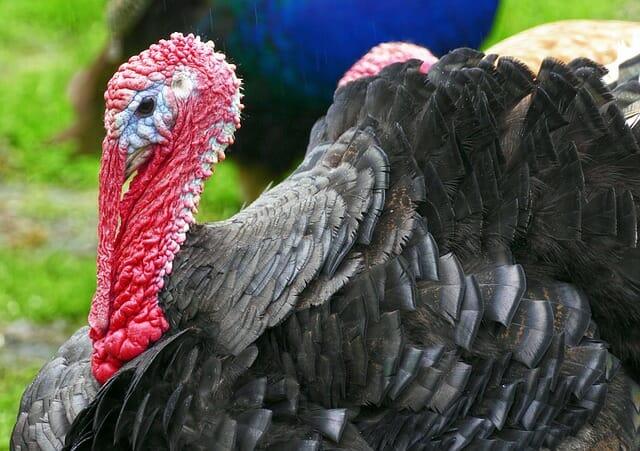On our farm, some of our favorite critters are the turkeys. Watching the Toms strut and hearing their gobbles are just some of the fun of raising these big, majestic birds.
Beyond their entertainment value, though, they produce lots of eggs that we raise and sell, and they provide the annual Thanksgiving and Christmas dinners.
If adding turkeys to your homestead is something you desire to do, there are several things you should consider first.
1. What is your goal in raising turkeys?
If you are after a holiday meal or meals and want a big, quick maturing bird, then a Broad-Breasted variety may be what you need. However, if you are willing to wait on a more slowly growing bird or plan to raise new turkeys each year, then you will definitely want to look at the Heritage varieties.
2. Heritage and Broad-Breasted birds are VERY different.
Knowing the difference between the two types of turkeys makes all the difference when deciding what to raise. Heritage birds grow much more slowly (we butcher our excess Toms at nine months old for good weight), can mate naturally and are plagued by fewer health issues.
Diatomaceous Earth: The Best All-Natural De-Wormer For Your Livestock!
Broad-breasted birds can be ready for harvesting as early as five months old if raised correctly, cannot reproduce naturally, and often succumb to heart, lung or joint issues if raised beyond the recommended harvest age.
3. Turkeys have different nutritional needs than other poultry.
Compared to other forms of backyard poultry, turkeys require a much higher protein count, especially as poults. The recommended percentage is 28 percent, which is higher than most available chick starters. Additionally, standard chick starter is often medicated, which can cause organ issues with developing poults.
During the laying season, hens and Toms both require closer to 18 percent protein, higher than the normal commercial layer feed which tends to run about 16 percents.
4. Turkeys are LARGE.
Although turkey poults are hardly much larger at hatch than large breed chickens, they don’t stay that way for long. In heritage birds, a hen will go anywhere from 10-20 pounds at full maturity and range from two to two and a half feet in height. Toms can range from 25-50 pounds and can stand easily over three feet tall.
Keep those sizes in mind when designing accommodations. Coop doors will need to be at least 24 inches tall, and nest boxes should be about two feet by two feet square. Perch materials should be a minimum of 3 inches in diameter.
5. Chicken wire does not always work to hold turkeys.
If you plan to keep turkeys in a run using standard chicken wire, think again. A full-sized Tom that wants out can make quick work of chicken wire with just his feet. Hens are slightly less destructive but just as capable. We find that 2×4 (inches) welded wire works best, with a layer of chicken wire behind it if you don’t want them sticking their heads out.
6. Turkeys don’t always get along with other poultry or livestock.
While some turkeys peacefully cohabitate with a number of other species, don’t expect this always to be the case. Hens and Toms both can be territorial and will often fight other poultry to keep them away from food, water and nesting areas. I have also seen turkeys fight off goats, dogs, cats, sheep and even horses.
7. Male turkeys can be aggressive during breeding season, and/or try to mate EVERYTHING.
When the spring-breeding season rolls around, Toms become big strutting balls of testosterone. While some boys are content to gobble their hearts out and court the ladies, some boys decide that all they want to do is fight. And that means fighting anyone or anything in their space.
Most homesteaders are equipped both mentally and physically to deal with an ornery rooster, but a 30-pound bird that suddenly has something to prove is another matter entirely. This is something to keep in mind if you have youngsters that either help or are responsible for the care of the homestead poultry.
If you are raising turkeys alongside other poultry, remember that Toms in the throws of breeding season often do not discriminate against the ladies of other species. This includes trying to breed chicken hens, duck hens, and the occasional goose. The weight difference can be fatal, however, so you may want to reconsider if your initial plan is to raise all your birds together.
8. Turkeys are seasonal layers.
Lastly, turkeys are seasonal layers, so if you plan to raise your turkeys for meat as well as eggs, just know that for five to six months of each year they won’t lay at all. This also means that for hatching purposes you will only be able to produce birds from early spring to early fall.
What advice would you add for raising turkeys? Share it in the section below:
 Off The Grid News Better Ideas For Off The Grid Living
Off The Grid News Better Ideas For Off The Grid Living




